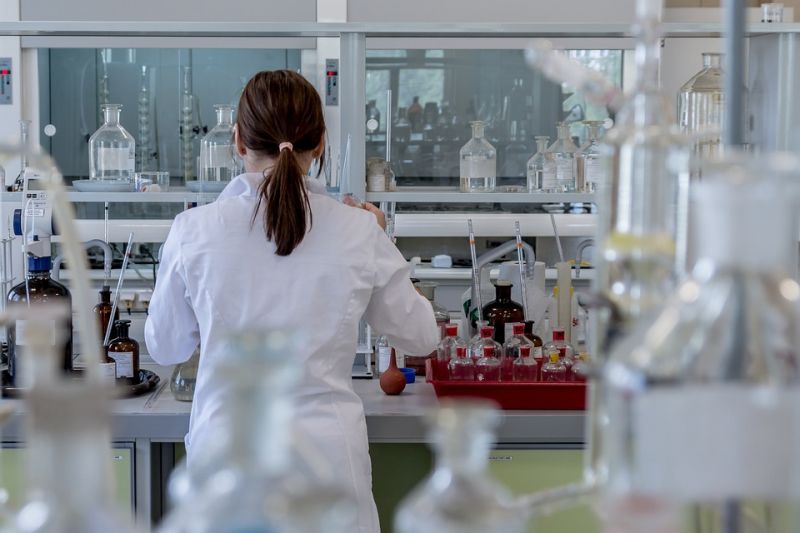School Of Mines Creates Water Treatment Technology Hub to Bridge Research and Commercialization
Published on by Water Network Research, Official research team of The Water Network in Academic
Colorado School of Mines celebrated the grand opening of a new 10,000-square-foot research facility in Denver that will pave the way for greater collaboration with industry, government, and academia to tackle one of the biggest challenges facing society today – access to clean water.
The WE2ST (Water-Energy Education, Science and Technology) Water Technology Hub will accommodate large-scale research focused on developing innovative treatment technologies for produced water from oil, gas and mineral production, groundwater contaminated with emerging contaminants (including toxic poly- and perfluoroalkyl substances), saline and hypersaline streams, municipal water, wastewater and more — leading to sustainable water reuse.

Representative image source: Pixabay, labeled for reuse
“Colorado School of Mines was founded almost 150 years ago to help the industry grow and thrive and since those early years, solving water and wastewater treatment challenges have been a key part of its research mission,” said Stefanie Tompkins, vice president of research and technology transfer. “As we approach our next 150 years, we want to continue to be a go-to place for the use-inspired research and innovation needed for society’s big challenges. This new facility is an important step in that direction, allowing our amazing researchers – in partnership with other research institutions, industry and government – to bridge the gap between lab-scale and commercial-scale water treatment technologies.”
Located off Interstate 70 and Quebec Street in Denver, the WE2ST Hub includes full analytical and wet labs for water analysis, a fabrication facility, and a flexible research bay, with capacity for 30,000 gallons of water and rail line access for bringing in those water samples from anywhere in the U.S.
The industrial facility was previously operated by NGL Energy Partners, a midstream oil and gas company, which donated the entirety of the facility’s equipment to Mines, a gift valued at approximately $800,000.
“For over a decade, NGL Energy Partners has been treating oilfield wastewater, creating clean water for use in irrigation, municipal and industrial applications, and, in addition, returning substantial amounts of clean water to the surface for beneficial use,” CEO H. Michael Krimbill said. “We are proud to be a part of this project and look forward to an ongoing collaboration with Colorado School of Mines through serving as a partner to assist in efforts to pilot and commercialize innovations that flow from the WE2ST Water Technology Hub.”
A gift of $1.5 million from the Colorado-based ZOMA Foundation will seed the facility's operations and support several undergraduate and graduate research fellowships.
“ZOMA is excited to support the WE2ST Water Technology Hub and hopes the facility can help accelerate innovations that improve access to clean water and further sustainable water reuse,” said Luis Duarte, chief philanthropic officer of ZOMALAB.
The hub’s inaugural projects include a U.S. Department of Energy-funded collaboration with UCLA on solar desalination and a smaller project in collaboration with the National Renewable Energy Laboratory on hydrokinetic – or ocean wave – energy desalination. The hub is also one of the core research facilities of NAWI, the National Alliance for Water Innovation. Dr. James Rosenblum, a former postdoctoral fellow at CU Boulder and staff scientist at Jacobs Engineering, will oversee daily operations of the facility.
“We want to thank NGL Energy Partners and the ZOMA Foundation for their help in making possible a facility of this size dedicated to developing innovative technologies for the treatment and reuse of municipal and industrial wastewater,” said Tzahi Cath, director of the WE2ST Water Technology Hub and professor of civil and environmental engineering at Mines.
“To better partner with industry and municipalities and help them solve the real-world water treatment challenges they face, we needed more space than is typically available on a college campus,” Rosenblum said. “We’re excited to get to work at a much larger scale than ever before.”
Source Colorado School of Mines
Media
Taxonomy
- Treatment
- Biological Treatment
- Industrial Wastewater Treatment
- Drinking Water Treatment
- Water Treatment & Control
- Industrial Water Treatment
- Waste Water Treatments
- Technology
- Wastewater Treatment
- Biological Treatment
- Water Treatment Solutions
- Industrial Water Treatment
- Industrial Water Reuse
- Industrial Water Managment
- Research
- Educational Departments
- Degree Programs
- M.Tech - Water Science & Governance
- Educational Institutions
- Water quality